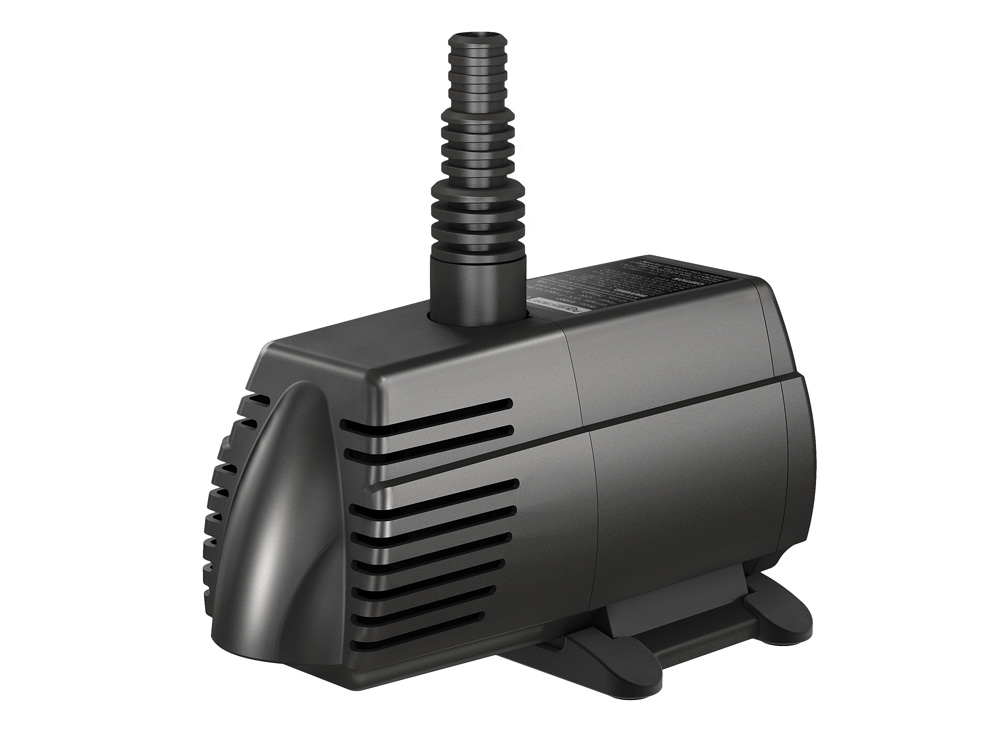[av_textblock fold_type=” fold_height=” fold_more=’Read more’ fold_less=’Read less’ fold_text_style=” fold_btn_align=” textblock_styling_align=” textblock_styling=” textblock_styling_gap=” textblock_styling_mobile=” size=” av-desktop-font-size=” av-medium-font-size=” av-small-font-size=” av-mini-font-size=” font_color=” color=” fold_overlay_color=” fold_text_color=” fold_btn_color=’theme-color’ fold_btn_bg_color=” fold_btn_font_color=” size-btn-text=” av-desktop-font-size-btn-text=” av-medium-font-size-btn-text=” av-small-font-size-btn-text=” av-mini-font-size-btn-text=” fold_timer=” z_index_fold=” id=” custom_class=” template_class=” av_uid=’av-l6qomp92′ sc_version=’1.0′ admin_preview_bg=”]
How to Clean a Pond Pump: A Step-by-Step Guide
Cleaning your pond pump is essential for maintaining optimal water flow and ensuring the health of your pond’s ecosystem. Over time, debris and sediment can accumulate, leading to reduced efficiency and potential malfunctions. Here’s a step-by-step guide on how to clean your pond pump effectively.
Tools and Materials Needed
- Screwdriver (if necessary for disassembly)
- Soft brush or sponge
- Bucket
- Hose with spray nozzle
- Utility knife (for any cutting of tubing, if needed)
- Water conditioner (optional, for rinsing parts)
- Gloves (to protect your hands)
Step-by-Step Instructions How to Clean a Pond Pump
1. Turn Off Power
- Safety First: Disconnect the pump from the power source to ensure safety during cleaning. If it’s hardwired, turn off the circuit breaker.
2. Remove the Pump from the Pond
- Disconnect Hoses: Detach the inlet and outlet hoses connected to the pump. Use a utility knife to cut any tubing if it’s stuck.
- Lift the Pump: Carefully lift the pump out of the pond. If it’s submerged, ensure you’re holding it securely to avoid splashing.
3. Inspect the Pump
- Check for Damage: Look for any visible signs of wear or damage, such as cracks in the casing or frayed wires. If you notice significant damage, consider replacing the pump.
4. Disassemble the Pump (if applicable)
- Remove Covers: Use a screwdriver to remove any screws or clips holding the pump casing together. Carefully take off the cover to access the internal components.
- Take Note: Remember how to reassemble the pump by taking photos or noting the arrangement of parts.
5. Clean the Pump Components
- Rinse with Water: Use a hose with a spray nozzle to rinse off any debris from the pump’s exterior and interior parts.
- Use a Brush: Gently scrub any stubborn deposits or algae with a soft brush or sponge. Avoid using harsh chemicals that could damage the pump.
- Clean Filter Media: If your pump has a filter, remove it and rinse it thoroughly. Replace it if it is too clogged or damaged.
6. Rinse and Condition
- Final Rinse: Give the pump a final rinse with clean water to ensure all debris and cleaning residue are removed.
- Optional Conditioning: If desired, use a water conditioner during the rinse to help neutralize chlorine or harmful chemicals.
7. Reassemble the Pump
- Put It Back Together: Carefully reassemble the pump components in the reverse order of disassembly. Ensure all parts are securely fastened and properly aligned.
- Check Seals: If there are gaskets or seals, ensure they are in good condition to prevent leaks.
8. Reconnect the Pump
- Attach Hoses: Reconnect the inlet and outlet hoses securely, ensuring there are no leaks.
- Return to the Pond: Place the pump back into the pond, ensuring it is submerged properly.
9. Turn On Power
- Reconnect Power: Plug the pump back in or turn the circuit breaker back on.
- Monitor Operation: Observe the pump for a few minutes to ensure it’s operating smoothly and efficiently. Check for any unusual noises or vibrations.
10. Regular Maintenance
- Schedule Regular Cleanings: To keep your pond pump running efficiently, clean it at least once a month during peak season and before winterizing.
- Monitor Performance: Regularly check the pump’s performance and water flow to catch any issues early.
Cleaning your pond pump is a straightforward process that can significantly impact the health of your pond. By following these steps and performing regular maintenance, you can ensure your pump operates efficiently and effectively, helping to maintain a clean and vibrant aquatic environment. Happy pond keeping!
[/av_textblock]
[av_image src=’https://aquascapes.com/wp-content/uploads/2011/12/p-1636-91005_ultra_pump.jpg’ attachment=’1637′ attachment_size=’full’ src_dynamic=” copyright=” caption=” image_size=” styling=” box_shadow=’none’ box_shadow_width=’10’ box_shadow_color=” align=’center’ font_size=” overlay_opacity=’0.4′ overlay_color=’#000000′ overlay_text_color=’#ffffff’ link=” link_dynamic=” target=” animation=’no-animation’ animation_duration=” animation_custom_bg_color=” animation_z_index_curtain=’100′ parallax_parallax=” parallax_parallax_speed=” av-desktop-parallax_parallax=” av-desktop-parallax_parallax_speed=” av-medium-parallax_parallax=” av-medium-parallax_parallax_speed=” av-small-parallax_parallax=” av-small-parallax_parallax_speed=” av-mini-parallax_parallax=” av-mini-parallax_parallax_speed=” hover=” blur_image=” grayscale_image=” fade_image=” appearance=” css_position=” css_position_location=’,,,’ css_position_z_index=” av-desktop-css_position=” av-desktop-css_position_location=’,,,’ av-desktop-css_position_z_index=” av-medium-css_position=” av-medium-css_position_location=’,,,’ av-medium-css_position_z_index=” av-small-css_position=” av-small-css_position_location=’,,,’ av-small-css_position_z_index=” av-mini-css_position=” av-mini-css_position_location=’,,,’ av-mini-css_position_z_index=” transform_perspective=” transform_rotation=’,,,’ transform_scale=’,,’ transform_skew=’,’ transform_translate=’,,’ av-desktop-transform_perspective=” av-desktop-transform_rotation=’,,,’ av-desktop-transform_scale=’,,’ av-desktop-transform_skew=’,’ av-desktop-transform_translate=’,,’ av-medium-transform_perspective=” av-medium-transform_rotation=’,,,’ av-medium-transform_scale=’,,’ av-medium-transform_skew=’,’ av-medium-transform_translate=’,,’ av-small-transform_perspective=” av-small-transform_rotation=’,,,’ av-small-transform_scale=’,,’ av-small-transform_skew=’,’ av-small-transform_translate=’,,’ av-mini-transform_perspective=” av-mini-transform_rotation=’,,,’ av-mini-transform_scale=’,,’ av-mini-transform_skew=’,’ av-mini-transform_translate=’,,’ mask_overlay=” mask_overlay_shape=’blob’ mask_overlay_size=’contain’ mask_overlay_scale=’100%’ mask_overlay_position=’center center’ mask_overlay_repeat=’no-repeat’ mask_overlay_rotate=” mask_overlay_rad_shape=’circle’ mask_overlay_rad_position=’center center’ mask_overlay_opacity1=’0′ mask_overlay_opacity2=’1′ mask_overlay_opacity3=” title_attr=” alt_attr=” img_scrset=” lazy_loading=’disabled’ id=” custom_class=” template_class=” av_element_hidden_in_editor=’0′ av_uid=’av-m27yrj5f’ sc_version=’1.0′ admin_preview_bg=”][/av_image]
[av_one_full first min_height=” vertical_alignment=” space=” custom_margin=” margin=’0px’ link=” linktarget=” link_hover=” padding=’0px’ border=” border_color=” radius=’0px’ background=’bg_color’ background_color=” background_gradient_color1=” background_gradient_color2=” background_gradient_direction=’vertical’ src=” background_position=’top left’ background_repeat=’no-repeat’ animation=” mobile_breaking=” mobile_display=” av_uid=’av-10y8z8n’]
[av_textblock fold_type=” fold_height=” fold_more=’Read more’ fold_less=’Read less’ fold_text_style=” fold_btn_align=” textblock_styling_align=” textblock_styling=” textblock_styling_gap=” textblock_styling_mobile=” size=” av-desktop-font-size=” av-medium-font-size=” av-small-font-size=” av-mini-font-size=” font_color=” color=” fold_overlay_color=” fold_text_color=” fold_btn_color=’theme-color’ fold_btn_bg_color=” fold_btn_font_color=” size-btn-text=” av-desktop-font-size-btn-text=” av-medium-font-size-btn-text=” av-small-font-size-btn-text=” av-mini-font-size-btn-text=” fold_timer=” z_index_fold=” id=” custom_class=” template_class=” av_uid=’av-108iu6v’ sc_version=’1.0′ admin_preview_bg=”]
Check out our store for all your water gardening needs! Aquascape products are Aquascape Inc. Certified.
Thanks for reading at Meyer Aquascapes! We hope you’ve enjoyed our post on How to Clean a Pond Pump. Please leave a comment below if you liked it or have any questions. We’d love to hear from you! Thanks for stopping by!
[/av_textblock]
[/av_one_full][av_hr class=’short’ height=’50’ shadow=’no-shadow’ position=’center’ custom_border=’av-border-thin’ custom_width=’50px’ custom_border_color=” custom_margin_top=’30px’ custom_margin_bottom=’30px’ icon_select=’yes’ custom_icon_color=” icon=’ue808′ font=’entypo-fontello’ av_uid=’av-4bnqpz’ admin_preview_bg=”]
[av_heading heading=’How can we help?’ tag=’h1′ link_apply=” link=” link_target=” style=’blockquote modern-quote modern-centered’ size=” subheading_active=” subheading_size=’15’ margin=” padding=’10’ color=” custom_font=” custom_class=” admin_preview_bg=” av-desktop-hide=” av-medium-hide=” av-small-hide=” av-mini-hide=” av-medium-font-size-title=” av-small-font-size-title=” av-mini-font-size-title=” av-medium-font-size=” av-small-font-size=” av-mini-font-size=”][/av_heading]
[av_textblock size=” font_color=” color=” av-desktop-hide=” av-medium-hide=” av-small-hide=” av-mini-hide=” av-medium-font-size=” av-small-font-size=” av-mini-font-size=” av_uid=’av-334avi’]
[/av_textblock]

